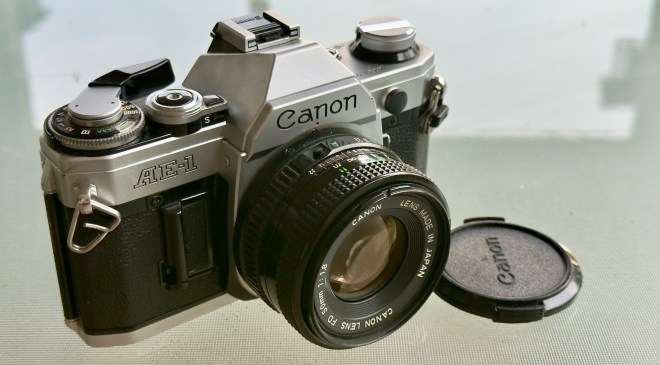
In the world of film photography, few cameras carry the weight of legacy quite like the Canon AE-1. Released in 1976, it was a pioneer in making automatic exposure accessible to the average photographer, while still offering manual controls for those who wanted to push their creativity further. Fast-forward to 2025, and this camera continues to hold a special place in the hands of enthusiasts, collectors, and newcomers alike. When paired with the Canon FD 50mm f/1.8, the AE-1 becomes a compact, reliable, and surprisingly versatile companion for anyone diving into film.
The Shooting Experience
The AE-1 is a joy to handle. Its solid metal body has just enough weight to feel sturdy without being burdensome, and the classic ergonomics are refreshingly simple compared to today’s menu-driven digital cameras. The shutter sound—an unmistakable metallic clack—is pure nostalgia, and advancing the film lever after each shot feels tactile in a way digital shutters never replicate.
Paired with the FD 50mm f/1.8, the AE-1 really shines. The lens is lightweight, sharp, and offers that dreamy film-era rendering that’s hard to mimic with modern glass. Wide open at f/1.8, it produces creamy backgrounds and characterful bokeh, while stopped down it delivers crisp images with plenty of contrast. On a roll of Kodak Portra or Fuji Pro 400H (if you can still get your hands on it), the results are classic and timeless.
Why It Still Works in 2025
In an era dominated by mirrorless cameras and AI-powered editing, the Canon AE-1 is an antidote to digital overload. It forces you to slow down, think about your exposure, and value each frame. For many photographers—especially younger ones discovering film for the first time—that deliberate process is part of the magic. The fact that the AE-1 remains widely available on the used market, often at reasonable prices compared to other vintage models, only adds to its appeal.
The Downsides
Of course, no 50-year-old camera is perfect. Some common issues with the AE-1 in 2025 include:
- Battery Dependence – The AE-1 requires a PX28 6V battery to function, and while modern equivalents exist, it means you’re out of luck if your battery dies mid-roll.
- Shutter Squeak – A notorious quirk of aging AE-1 bodies, the high-pitched squeal during firing is a warning that a CLA (clean, lube, adjust) is overdue. Repairs are possible, but they can be costly.
- Learning Curve for Beginners – Despite being marketed as user-friendly, complete newcomers might struggle with film loading, manual focusing, or understanding exposure without prior guidance.
Final Thoughts
The Canon AE-1 with the FD 50mm f/1.8 remains one of the most approachable and rewarding ways to step into 35mm film photography in 2025. It blends history, mechanical charm, and image quality in a way that few other cameras can match. Yes, it has its quirks and age-related issues, but that’s part of the experience—you’re not just shooting photos, you’re engaging with a piece of photographic history.